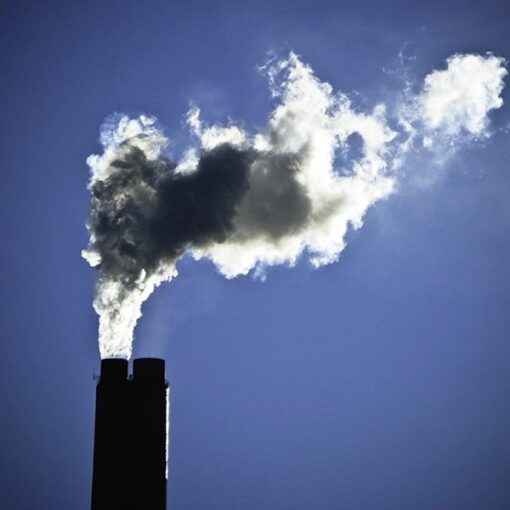On March 12, Environmental Protection Agency (EPA) Administrator Lee Zeldin announced plans to reconsider EPA’s 2009 endangerment finding for greenhouse gas (GHG) emissions, along with all regulations and actions that rely on the finding. This process was initiated pursuant to an executive order issued by President Trump on the first day of his second term in which he called for review of the “legality and continuing applicability” of the 2009 endangerment finding. However, as this blog post explains, the endangerment finding rests on an unassailable scientific foundation. It also rests on Supreme Court precedent, Massachusetts v. EPA, that required EPA to make a science-based determination on the effects of GHG emissions.
The 2009 endangerment finding has played a foundational role in Clean Air Act regulation of GHG emissions from both mobile and stationary sources. In the original finding, issued in 2009, EPA concluded that six GHGs— carbon dioxide (CO2), methane (CH4), nitrous oxide (N2O), hydrofluorocarbons (HFCs), perfluorocarbons (PFCs), and sulfur hexafluoride (SF6)— threaten the public health and welfare of current and future generations. EPA also made a separate “cause-or-contribute” finding in which it determined that U.S. motor vehicles contribute to GHG pollution that threatens public health and welfare.
The 2009 finding was referenced in subsequent endangerment and cause-or-contribute findings for other source categories, including power plants, oil and natural gas operations, and aircraft. With each successive rulemaking, EPA acknowledged that the evidence of endangerment had grown stronger over time due to the increasing severity of climate change, new observational evidence of climate impacts, and advances in scientific understanding of how climate change affects public health and welfare.
The Trump administration has not yet issued a public proposal for modifying or revoking the endangerment finding, but Administrator Zeldin’s announcement and the accompanying EPA Press Release provide insights on how the administration may seek to justify its revocation. In his remarks, Zeldin focused on the costs imposed by GHG regulations. However, both the text of the Clean Air Act and prior case law make it clear that EPA cannot consider costs when making scientific determinations regarding the effect of air pollutants on public health and welfare. The Supreme Court explicitly held in Massachusetts v. EPA that EPA’s obligation was to make a “scientific judgment” as to “whether greenhouse gas emissions contribute to climate change” and that it was impermissible for EPA to base its decision on policy rationales that are “divorced from the statutory text.” Thus, it is difficult to imagine how the Trump administration could justify revocation based on costs.
The press release suggests another possible rationale for revocation. It asserts that the 2009 finding is characterized by “significant uncertainties in the science and assumptions” and that the methodology used to evaluate endangerment was “flawed and unorthodox” because:
“Contrary to popular belief, the Endangerment Finding did not directly find that carbon dioxide emissions from U.S. cars endanger public welfare. Instead, the Finding looks at a combination of emissions of six different gases—and cars don’t even omit all six. It then creatively added multiple leaps, arguing that the combined six gases contribute some mysterious amount above zero to climate change and that climate change creates some mysterious amount of endangerment above zero to public health.”
These statements suggest that the Trump administration may take direct aim at the scientific basis for the endangerment finding.
There are two components to the Trump administration’s claims here. First, there is the suggestion that GHGs should not have been grouped together in the endangerment finding. This is not a compelling rationale for revocation, as the decision to group GHGs was within EPA’s statutory discretion. The Clean Air Act explicitly defines an air pollutant as “any air pollution agent or combination of such agents” and there is precedent for grouping pollutants with similar effects together (see, e.g., 65 Fed. Reg. 35430). There is also a pragmatic rationale for grouping GHGs, since they are all radiative forcing agents that contribute to the same environmental problem (climate change). Granted, EPA may have discretion to group GHGs differently in a modified endangerment finding, but it would need to give a reasoned explanation for doing so. Even if EPA were to evaluate GHGs as separate pollutants, there would still a scientific basis for finding that individual GHGs cause endangerment through contributions to radiative forcing.
Second, the Trump administration has asserted that the endangerment finding relies on logical leaps and does not include sufficient information about the magnitude of harmful impacts attributable to CO2 and other GHG emissions. These assertions overlook the considerable body of scientific evidence that was compiled in support of the 2009 endangerment finding, as well as the scientific knowledge that has been generated in the sixteen years since then and which provides overwhelming support for the conclusion that GHG emissions endanger public health and welfare. The Trump administration’s assertions also ignore legal precedent in which courts have recognized the validity of climate science and the serious harms associated with climate change, including the Supreme Court’s standing analysis in Massachusetts v. EPA (finding that the “harms associated with climate change are serious and well recognized” and “widely shared” across the United States). Federal and state courts have issued similar findings in more recent decisions such as 350 Montana v. Haaland (Ninth Circuit Court of Appeals, 2022) (discussing “dozens of sobering and unchallenged observations” regarding the harmful effects of climate change) and Held v. State (Montana Supreme Court, 2024) (“climate change is causing serious and irreversible harms to the environment in Montana”).
For the 2009 endangerment finding, EPA issued a technical support document that contains several hundred pages of information about the relationship between GHG emissions and climate change, the ways in which climate change affects public health and welfare, and the contribution of motor vehicle emissions to those effects. It identifies many harmful impacts that are attributable to climate change, including sea level rise, increases in the severity and frequency of extreme events, agricultural impacts, ecosystem impacts, and more. Although the document identifies areas of uncertainty – for example, regarding the attribution of hurricanes to climate change – the existence of such uncertainty does not undermine the ultimate conclusion that GHG emissions endanger public health and welfare. This is because there are so many independent lines of evidence supporting that conclusion (e.g., hundreds of different climate variables monitored by different instruments and different entities all pointing towards the central role of human activities in climate change as well as multitude of harmful effects attributable to climate change).
The 2009 endangerment finding was upheld by the D.C. Circuit Court of Appeals in Coalition for Responsible Regulation v. EPA (2012). The court noted that EPA had reasonably relied on peer-reviewed assessments from the Intergovernmental Panel on Climate Change (IPCC), the U.S. Global Change Research Program (USGCRP), and the National Research Council (NRC) which synthesized thousands of individual studies on climate change, and had amassed “substantial record evidence” of harms attributable to anthropogenic GHG emissions. The court also rejected the argument that the existence of some scientific uncertainty would warrant invalidation of the endangerment finding. As the court noted, the Clean Air Act only requires a finding that the air pollution at issue “may reasonably be anticipated to endanger public health or welfare.” 42 U.S.C. § 7521(a)(1). The court held that this requires a “precautionary, forward-looking scientific judgment” about the risks of GHG emissions.
Since 2009, the evidentiary basis for endangerment from GHG emissions has only grown stronger (see, e.g., Duffy et al. 2019). The IPCC concluded in its latest assessment that anthropogenic GHG emissions “unequivocally” cause climate change, resulting in pervasive and harmful impacts across the world, many of which have been attributed to climate change with high or very high scientific confidence. For example, the IPCC found that it is an “established fact” that anthropogenic climate forcing is causing changes in the frequency and/or intensity of weather and climate extremes, particularly extreme heat events. The Fifth National Climate Assessment (NCA5) contained more detail about the specific ways in which climate change is adversely affecting the United States. NCA5 found “the effects of human-caused climate change are already far reaching and worsening across every region of the United States” including climate-related extreme events, climate-related shocks to agriculture and other economic sectors, and disproportionate impacts on vulnerable groups and communities.
Due to advances in attribution methodologies, it is also now possible to quantify specific harmful impacts attributable to specific emission sources. For example, Callahan and Mankin (2025) demonstrate how climate models and economic damage functions can be used to calculate heat-related losses attributable to GHG emissions from certain fossil fuel companies’ products. Researchers have also developed techniques for quantifying the contribution of emissions to physical impacts such as sea level rise and extreme heat, and impacts such as mortality from extreme heat. These end-to-end attribution methodologies could be used to estimate damages and harmful impacts attributable to emissions from motor vehicles and other source categories for which EPA has issued GHG emissions controls. The social cost of carbon and other GHGs could also be used for this purpose, although those metrics are currently under attack by the Trump administration as well. The topic of end-to-end attribution and damage estimation was one of the issues discussed at the Columbia University conference on “Attribution Science and Climate Law” held in January 2025. A summary of the conference proceedings is available here.
There is also a growing body of research on health impact attribution that further supports the endangerment finding. A recent issue of Nature Climate Change featured several studies on the health effects of climate-driven changes in physical phenomena such as heat wave and wildfires. These studies show that it is possible, in some instances, to quantify impacts such as mortality from increased smoke and extreme heat (see, e.g., Yoen Park et al., 2024). These estimates can be tailored to the United States – for example, Khatana et al. (2024) estimated that by mid-century (2036-2065), heat-related cardiovascular deaths in the U.S. could rise by up to 233 percent as climate change intensifies the frequency, duration, and severity of extreme heat. Researchers have also published meta-assessments of health impacts attributable to climate change, most notably the annual reports issued by the Lancet Countdown on Climate Change and Human Health.
The Trump administration will need to initiate a formal notice-and-comment rulemaking in order to proceed with modification or revocation of the GHG endangerment finding. It is unlikely that the administration will make a good faith effort to compile the best available science on this topic, but civil society members can use the comment process to ensure that relevant scientific resources are included in the administrative record for the rulemaking.

Jessica Wentz
Jessica is now a non-resident senior fellow at the Sabin Center.





